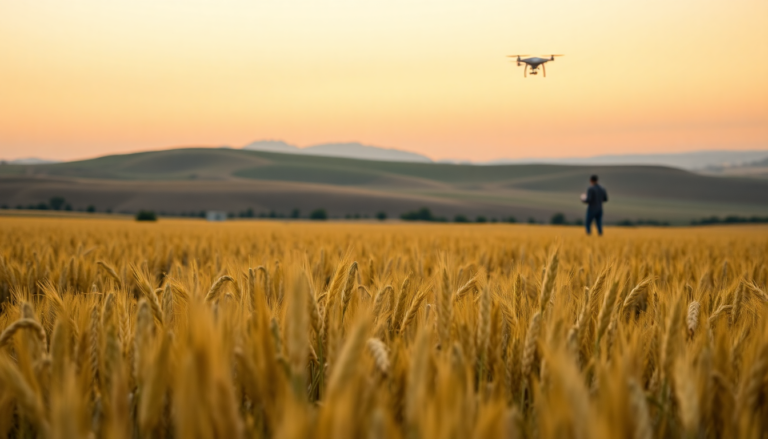Argomenti trattati
Imagine a world where the very crops we depend on can adapt to the whims of a changing climate, where farmers can cultivate more while using less. This isn’t just a dream; it’s the promise of agricultural biotechnology. With the undeniable impact of human activities on the climate, particularly through greenhouse gas emissions, we stand at a precipice. Agriculture and forestry accounted for roughly 10.5% of these emissions in the U.S. in 2018. As temperatures rise and extreme weather becomes more frequent, we need innovative solutions to ensure food security and sustainability.
How biotechnology mitigates climate change
Agricultural biotechnology is not merely about improving yields; it’s about making agriculture resilient to climate-related challenges. By developing crops that are better suited to withstand droughts, heat, and diseases, we can reduce reliance on chemical inputs and enhance sustainability. For example, the push for drought-tolerant varieties of staple crops like wheat, rice, and soybeans is gaining momentum. These innovations can significantly reduce the environmental footprint of farming while ensuring that farmers can still produce food in less-than-ideal conditions.
Innovative approaches to reducing emissions
Consider this: certain cover crops can be transformed into sustainable biofuels, which not only support energy needs but also contribute to a reduction in greenhouse gas emissions. Fruits and vegetables designed to remain fresh longer can help tackle the pressing issue of food waste—a significant contributor to emissions. Moreover, researchers are exploring methods to sequester carbon dioxide using trees and microbes, further enhancing the role of biotechnology in climate change mitigation.
Advances in plant and animal breeding
But it’s not just plants that benefit. Agricultural biotechnology is revolutionizing animal breeding as well. Through genome editing, scientists are developing heat-tolerant livestock that can better cope with rising temperatures. Imagine cattle that can regulate their body temperature more efficiently, reducing heat stress and improving overall health. I remember visiting a farm where the owner proudly showcased his new herd of genetically improved cattle, and the difference was astonishing—healthier animals mean less reliance on antibiotics and lower mortality rates.
Global leadership in agricultural innovation
The United States has long been at the forefront of agricultural research and development, fostering innovations that promote climate-smart practices. This leadership is crucial as we strive to meet the demands of a growing population while also addressing environmental concerns. By utilizing evidence-based science and innovative practices, agricultural biotechnology serves as a vital tool in expanding the capabilities of farmers and producers.
Food systems and future challenges
As we look to the future, it’s clear that the challenges facing global food systems are numerous and complex. Yet, through the lens of biotechnology, we can envision a pathway that not only enhances productivity but also reduces environmental impacts. The ability to produce more with fewer resources—less land, water, and inputs—is paramount. Personally, I believe that the integration of biotechnology into farming practices can alleviate poverty, improve nutrition, and raise living standards across the globe.
A collective responsibility
As many know, the intersection of climate change and agricultural productivity is fraught with urgency. The solutions we implement today will determine the resilience of our food systems tomorrow. We must be bold in adopting biotechnological innovations and push against outdated practices that no longer serve our needs. The future of agriculture lies in our willingness to embrace change and invest in the tools that will sustain it.

